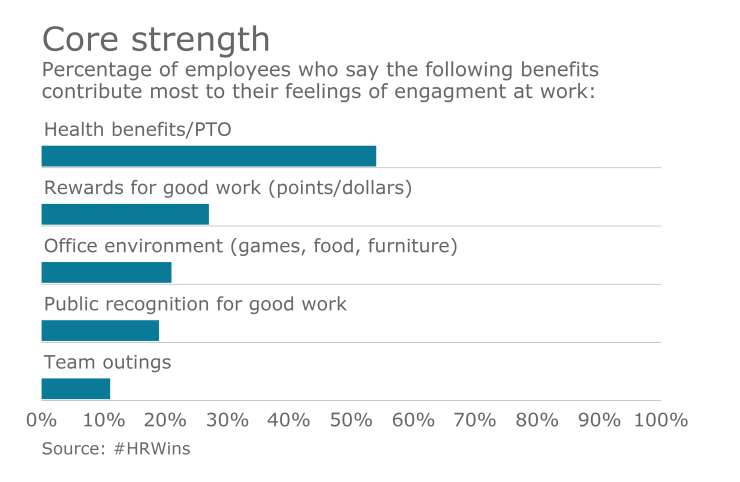I knew that engaging employees in benefits was a pain point for many employers. But a recent conversation with Brian Marcotte made me realize just how serious the problem is.
“What keeps employers up at night is engagement,” said the president and CEO of the National Business Group on Health. “It’s
Because employees often ask their employers for more benefits — calling for paid leave, student loan benefits and other perks that make them healthy and happy — it doesn’t always cross my mind that there already are a number of workplace offerings that often go unnoticed and underutilized by employees.

The reason for the problem is nothing new: Benefits are complex and confusing, and communication isn’t always prioritized. And let’s face it, employees have other things to do besides feverishly researching their employer’s benefits roster — unless it’s at a time when they really need help. As Mike Thompson, president and CEO of the National Alliance of Healthcare Purchaser Coalitions, told me, the focus on putting the employee in the middle, making workers the center of these decisions, hasn’t turned out to be the best strategy. “I don’t think it’s working the way it’s intended,” he said.
What seems to be missing from the equation is more education and continual support for workers.
One solution, as Thompson pointed out, is a streamlined approach, where one vendor leads the way and guides employees to all the other resources available to them, as opposed to having a whole array of vendors and expecting employees to navigate the maze.
Other answers are evidenced by the companies who made EBN’s recent list of the country’s
Yet another solution is found in a new study from WorldatWork and Korn Ferry, which discovered that a number of employers are increasing personalized, progressive health benefits in an effort to reach an always-on workforce.
Offerings such as telemedicine and access to a 24-hour nurse line shot up by double-digit percentages in the past year. They are being touted as a way to get employees access to care when they need it most, even on weekends and after hours. Likewise, stress reduction (offered by 65% of employers), weight management (70%) and smoking cessation programs (84%) can be accessed 24/7, improving behavioral changes in a positive way for employees and employers. (See more
It’s a smart idea: There’s more to engagement than letting employees know certain benefits exist. It’s also about designing them in such a way that employees are able to use them.
Employees aren’t 9-5 anymore, so we can’t expect our benefits to be, either.
After all, what’s the point of having a robust benefits package if employees aren’t taking advantage of it?





